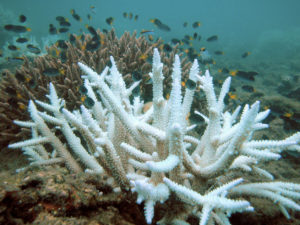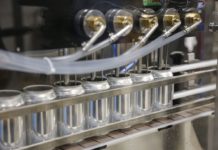 A big concern for C is acidifying oceans preventing the growth of coral skeletons, which dissolve in acidic waters. Scientists have now found that coral skeletons grow inside of the coral tissue, where the water is less acidic.
A big concern for C is acidifying oceans preventing the growth of coral skeletons, which dissolve in acidic waters. Scientists have now found that coral skeletons grow inside of the coral tissue, where the water is less acidic.
The study was published on August 28, 2017 in Proceedings of the National Academy of Sciences of the USA by collaborators from the University of Haifa, Israel and the University of Wisconsin.
Surprisingly, the scientists found that corals deposit their calcium skeleton much in the same way that highly divergent organisms do, such as mollusks and sea urchins. Even so far down the evolutionary tree of life, many pathways are conserved, with corals being an ancestral group.
With the study’s new model for coral growth, it explains how some corals can grow at very fast speeds. So fast that old models based on molecule by molecule growth could not explain. Despite their fast speeds, corals may not recover from too many mass bleaching events which are wiping the corals out.
The study was conducted on the coral species Stylophora pistillata, a common branching coral. Indeed, different species of corals form their skeleton in different ways, but this was the first study to directly characterize coral skeletal growth. More research must be done in the future to find out how other species of corals build their skeleton, to see if they too are resistant to an acidic ocean.
The study also warns that this doesn’t mean corals are okay with how things are going from climate change. Ocean acidification is only one symptom of the industrial revolution and human output of CO2. The more imminent threat is coral bleaching caused by high sea surface temperatures. Even if a coral can build their skeletons, they can’t survive global climate change.
Still, this is very good news for corals. With increasing diseases and episodes of mass bleaching events, they need every help they can get.
https://www.sciencedaily.com/releases/2017/08/170828164123.htm
http://www.pnas.org/content/early/2017/08/22/1707890114#corresp-1











